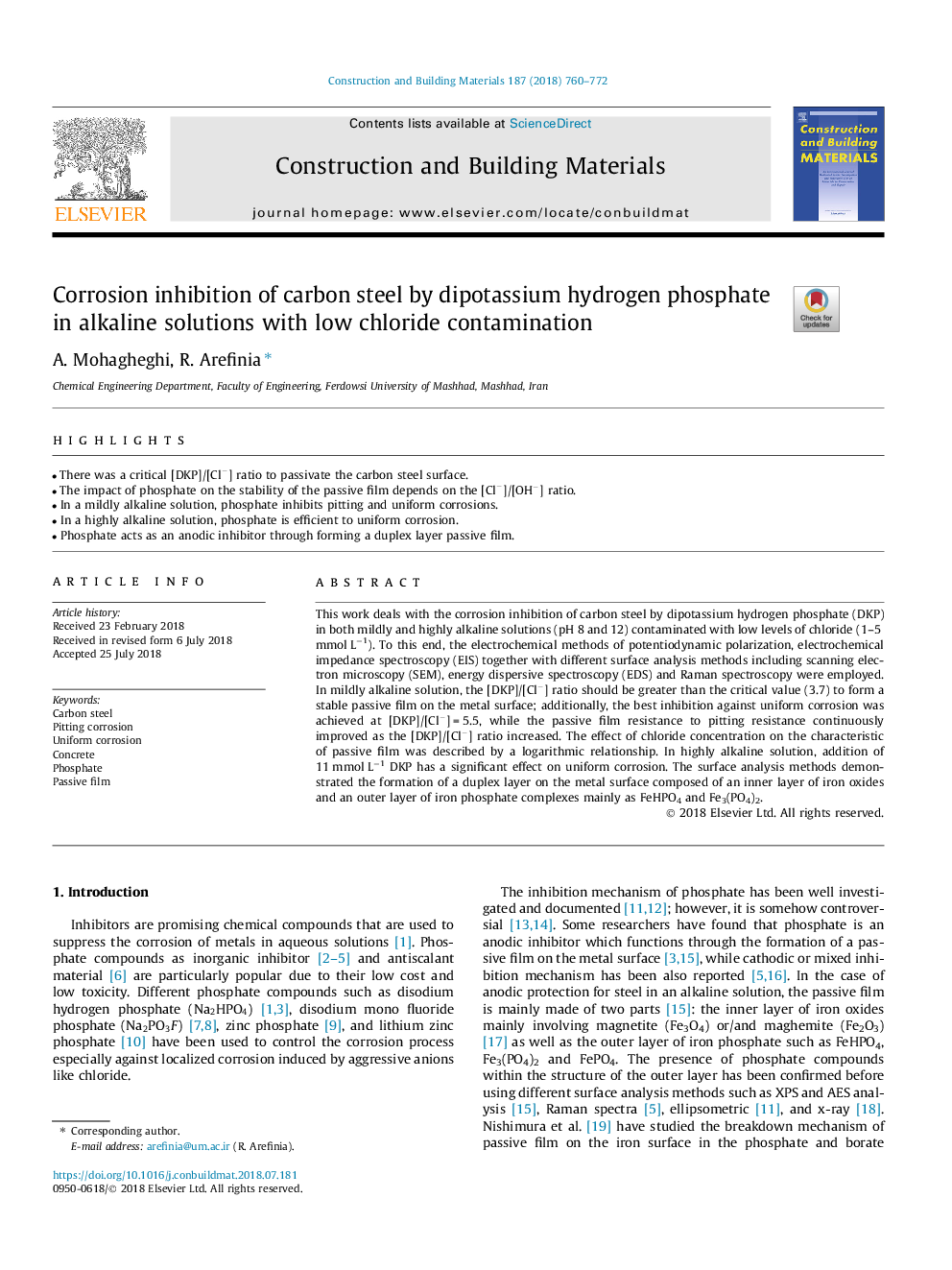| Article ID | Journal | Published Year | Pages | File Type |
|---|---|---|---|---|
| 6711518 | Construction and Building Materials | 2018 | 13 Pages |
Abstract
This work deals with the corrosion inhibition of carbon steel by dipotassium hydrogen phosphate (DKP) in both mildly and highly alkaline solutions (pH 8 and 12) contaminated with low levels of chloride (1-5â¯mmolâ¯Lâ1). To this end, the electrochemical methods of potentiodynamic polarization, electrochemical impedance spectroscopy (EIS) together with different surface analysis methods including scanning electron microscopy (SEM), energy dispersive spectroscopy (EDS) and Raman spectroscopy were employed. In mildly alkaline solution, the [DKP]/[Cl-] ratio should be greater than the critical value (3.7) to form a stable passive film on the metal surface; additionally, the best inhibition against uniform corrosion was achieved at [DKP]/[Cl-]â¯=â¯5.5, while the passive film resistance to pitting resistance continuously improved as the [DKP]/[Cl-] ratio increased. The effect of chloride concentration on the characteristic of passive film was described by a logarithmic relationship. In highly alkaline solution, addition of 11â¯mmolâ¯Lâ1 DKP has a significant effect on uniform corrosion. The surface analysis methods demonstrated the formation of a duplex layer on the metal surface composed of an inner layer of iron oxides and an outer layer of iron phosphate complexes mainly as FeHPO4 and Fe3(PO4)2.
Related Topics
Physical Sciences and Engineering
Engineering
Civil and Structural Engineering
Authors
A. Mohagheghi, R. Arefinia,
